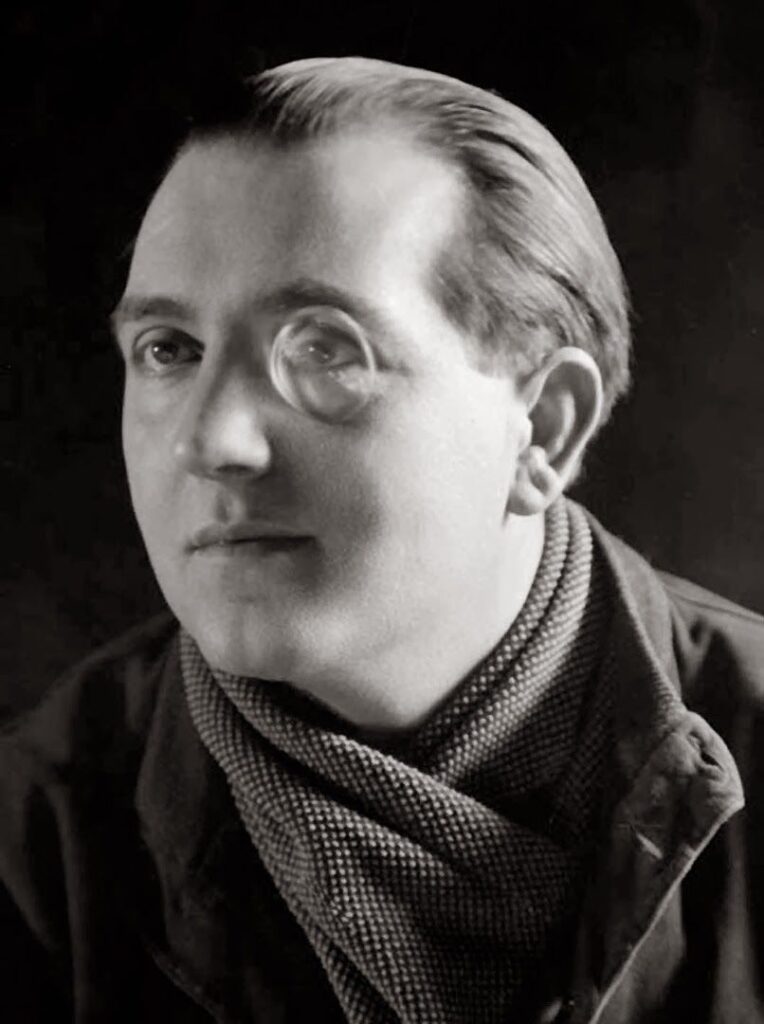
Ever wonder what it truly takes to make it big in Hollywood, or in any major film industry for that matter? It’s often more than just raw talent or a brilliant idea. Behind every beloved film and critically acclaimed director, there’s usually a mountain of challenges, hurdles, and outright struggles that had to be overcome. The path to cinematic glory is rarely a smooth red carpet; it’s often paved with grit, resilience, and an unwavering belief in one’s vision, even when the world seems to be saying no.
Today, we’re diving deep into the incredible stories of nine directors whose works have garnered immense praise, but whose journeys were anything but easy. These aren’t just tales of creative genius; they’re sagas of overcoming discrimination, political upheaval, personal tragedy, and industry resistance. From fighting for a seat at the table to fleeing oppressive regimes, these filmmakers prove that sometimes, the greatest art emerges from the deepest struggles.
So, buckle up, film buffs! We’re about to explore how these remarkable individuals not only navigated countless obstacles during their careers but also transformed those very difficulties into the distinctive styles and powerful narratives that define their legacies. Get ready to be inspired by the sheer perseverance and innovative spirit of some of cinema’s true trailblazers. Their stories are a testament to the power of art to transcend adversity.

1. **Emilio Fernández: From Insurrection to Iconic Cinema**Prepare for a story that sounds like it’s straight out of a movie script! Emilio Fernández, often hailed as the most important director of The Golden Age of Mexican Cinema, had a life filled with as much drama and upheaval as any of his films. His journey into filmmaking was far from conventional, beginning with a failed insurrection and a prison escape. Talk about an unconventional start!
After these dramatic early events, Fernández left Mexico, seeking a new beginning. He found himself in Los Angeles, where he had to take on various manual labor jobs to survive, working as a bartender, longshoreman, and stonemason. These experiences, no doubt grueling, gave him a unique perspective on life and human struggle, which would later imbue his films with a profound sense of realism and depth. His first taste of the film industry came through working as an extra and body double for stars like Douglas Fairbanks, a small step into a world he would soon dominate.
It wasn’t until 1941 that he directed his first film, *La Isla de la Pasión*. Over his prolific career, Fernández directed more than 40 films, including masterpieces such as *María Candelaria* (1943), *La Perla* (1945), *Una Cita de Amor* (1958), and *La Choca* (1974). His works were recognized internationally, earning him a Palm d’Or from the Cannes Film Festival, several Ariel Awards, a Golden Lion from the Venice Film Festival, and even a Golden Globe. These accolades speak to the immense impact he had on world cinema, rising from humble and challenging beginnings.
Interestingly, despite his significant contributions and international acclaim, Fernández never won an Academy Award. However, there’s an unsubstantiated but fascinating claim that he was the model for the iconic Oscar statuette itself. Whether true or not, it’s a testament to his legendary status and the profound, almost mythical, influence he had on Hollywood and beyond. His life story truly exemplifies how personal adversity can fuel artistic greatness.

2. **Fritz Lang: Escaping the Shadows of War and Tyranny**Fritz Lang, one of the foundational figures of German Expressionism, directed some of early cinema’s most iconic works, including *Metropolis* (1927), *M* (1931), and *Die Nibelungen* (1924). But the darkness and intense psychological depth evident in his films were not just artistic choices; they were deeply rooted in a personal life marked by significant violence and political turmoil. His early experiences undoubtedly shaped his distinctive, often haunting, film style.
Lang’s personal history was fraught with hardship. He lost an eye fighting in World War I, a physical and psychological wound that surely influenced his worldview. Adding to this tragedy, in the early 1920s, his first wife, Lisa Rosenthal, was shot under mysterious circumstances, with some even citing Lang as likely being involved. These intense personal events paint a picture of a man who lived through profound darkness, which inevitably found its way into his cinematic expressions.
Beyond personal struggles, Lang faced immense political pressure during a tumultuous period in German history. He frequently collaborated with his second wife, novelist and screenwriter Thea von Harbou, but their paths diverged dramatically as she began exhibiting Nazi sympathies. This led to their divorce, marking another significant personal fracture for Lang. The political climate intensified when a screening of his film *Dr. Mabuse the Gambler* (1922) was shut down by Joseph Goebbels, and the film was later banned for “anti-Nazi sentiment.”
Recognizing the perilous situation, Lang made the courageous decision to leave Berlin, beginning a new career in Hollywood. This act of fleeing tyranny underscores the immense obstacles he overcame to continue his artistic pursuits. Director François Truffaut, himself a giant of cinema, later wrote that Lang, especially in America, was greatly under-appreciated by historians and critics. Despite this, Lang’s groundbreaking contributions to film, born from a life of intense personal and political struggle, cemented his place as an unparalleled master of cinema, pushing boundaries in visual storytelling and thematic depth.

3. **Melvin Van Peebles: The Accidental Auteur Who Broke Hollywood’s Mold**Melvin Van Peebles is a name synonymous with independent cinema and groundbreaking black filmmaking. But his entry into the world of directing was anything but straightforward; it was a testament to his sheer determination and ability to turn obstacles into opportunities. In the late 1950s, when he found himself unable to break into the predominantly white-dominated Hollywood scene, he didn’t give up. Instead, he took his talents across the Atlantic.
He established himself as a writer in France, a bold move that speaks volumes about his resilience and creative drive. While in Paris, he directed his first feature-length film, *The Story of a Three-Day Pass* (1968). This French experience inadvertently opened doors back home, as American producers, mistaking him for a French auteur, were more willing to give him a chance. This fascinating twist of fate helped him direct his first Hollywood film, *Watermelon Man* (1970).
Van Peebles was a true renaissance man, excelling not only as a director but also as a writer, composer, actor, playwright, and editor. Many credit him with pioneering the blaxploitation genre, a movement that, for all its complexities, provided a vital platform for Black voices and narratives in mainstream cinema. His most significant achievement in this realm was his third feature-length film, *Sweet Sweetback’s Baadasssss Song* (1971).
This film became an unprecedented success, shattering records by becoming the highest-grossing American independent film at the time, raking in $15.2 million from a modest $150,000 budget. This wasn’t just a financial win; it was a cultural phenomenon, proving the commercial viability of Black-led and Black-directed stories. Though he passed in 2021, Van Peebles’ contributions and legacy in new Black cinema and theater continue to inspire, demonstrating how a single vision, fueled by the refusal to be sidelined, can utterly transform an industry.” , “_words_section1”: “1948

4. **Pedro Almodóvar: Spain’s Irreverent Visionary**If you’re looking for a filmmaker who consistently challenges the status quo with vibrant colors, unforgettable characters, and themes that stick with you long after the credits roll, then you need to know Pedro Almodóvar. This iconic director, revered in Spanish and LGBTQ cinema, has built a massive cult following, particularly among audiences here in the U.S. His films aren’t just entertainment; they’re a dive into a uniquely “Almodóvarian” universe that’s equal parts provocative, poignant, and absolutely mesmerizing.
Almodóvar got his start creating several short films throughout the 1970s, honing his distinctive voice before unleashing his first feature-length film, *Pepi Luci, Bom*, in 1980. This debut signaled the arrival of a truly original talent, unafraid to explore the raw edges of human experience and emotion. He wasn’t just making movies; he was crafting a new cinematic language, one that spoke directly to often-unseen facets of society.
His extensive filmography boasts masterpieces like *Women on the Verge of a Nervous Breakdown* (1988), *All About My Mother* (1999), *Volver* (2006), and *The Skin I Live In* (2011). You can spot an Almodóvar film from a mile away thanks to his signature use of bold colors, often eye-popping reds and blues, combined with unique camera angles that draw you deeper into his characters’ worlds. More than just aesthetics, his films fearlessly tackle complex themes of sexual deviancy, Catholicism, and camp, proving that storytelling can be both deeply personal and universally resonant, even when it challenges conventional morality and societal expectations.

5. **Mira Nair: Weaving Realism and Activism into Film**Let’s talk about trailblazers who deserve far more recognition. While we celebrate new talents like Celine Song and Chloé Zhao today, it’s crucial to look back at the incredible work of directors like Mira Nair, who have been forging paths for Asian female filmmakers for decades. It’s a sad truth that many brilliant artists, especially women of color, haven’t always received the praise they’ve earned. Nair stands out as a director whose films not only entertain but also resonate with a powerful sense of realism, deeply rooted in her background and activism.
Nair’s journey into feature filmmaking began after a successful career as a documentary filmmaker, a foundation that profoundly shaped her unique approach to scripted narratives. Her first scripted feature, *Salaam Bombay!* (1988), wasn’t just a hit; it was a critical darling, winning the prestigious Camera d’Or and Prix du Public at the Cannes Film Festival and earning an Oscar nomination for Best Foreign Language Film. This instant success proved that her blend of raw authenticity and compelling storytelling could captivate global audiences.
Throughout her career, Nair has continued to deliver exceptional films that highlight diverse perspectives and experiences, including *Mississippi Masala* (1991), *Monsoon Wedding* (2001), *Vanity Fair* (2004), and *The Namesake* (2006). Her distinctive sense of realism, directly stemming from her documentary roots, brings an unfiltered honesty to her work. Moreover, her passion for activism is often palpable, giving her films a depth and purpose that transcend mere entertainment. She masterfully tells stories that are both intimately personal and broadly societal, ensuring her voice, and the voices of those she portrays, are heard loud and clear, challenging typical Hollywood portrayals and embracing a more authentic vision.

6. **Sofia Coppola: A Distinct Voice for Modern Femininity**When you hear the name Coppola, certain cinematic giants probably come to mind – but let’s make sure Sofia Coppola is right there at the top! As one of two Coppolas on our radar, she’s not just riding on a famous last name; she’s a visionary in her own right, proving that a unique perspective and an undeniable aesthetic can leave an indelible mark on Hollywood. She famously started her career as an actress, but it didn’t take long for her to realize her true calling was behind the camera, making a swift and impactful transition to filmmaking in the late 1990s.
Her directorial debut, *The Virgin Suicides* (1999), immediately showcased her distinctive style, but it was *Lost in Translation* (2003) that truly cemented her status. This film earned her an Academy Award nomination for Best Director, making her only the third woman in history to achieve such recognition at the time. This was a monumental moment, signaling a significant breakthrough for female filmmakers in an industry that had historically been dominated by men. She wasn’t just a good director; she was a pioneer, opening doors and expanding perceptions of who could tell powerful cinematic stories.
Sofia Coppola’s filmography, which also includes *Marie Antoinette* (2006) and most recently *Priscilla* (2023), explores themes of youth, femininity, privilege, and loneliness with an almost immediately recognizable auteur quality. Her films are characterized by incredible wide shots, meticulous use of fashion, and a melancholic yet beautiful atmosphere that deeply connects with young women and teens in particular. She masterfully captures the inner lives of her characters, offering a nuanced and empathetic portrayal of female experience that has not only influenced a generation of viewers but has also solidified her place as a director whose singular vision continuously pushes the boundaries of contemporary cinema.



